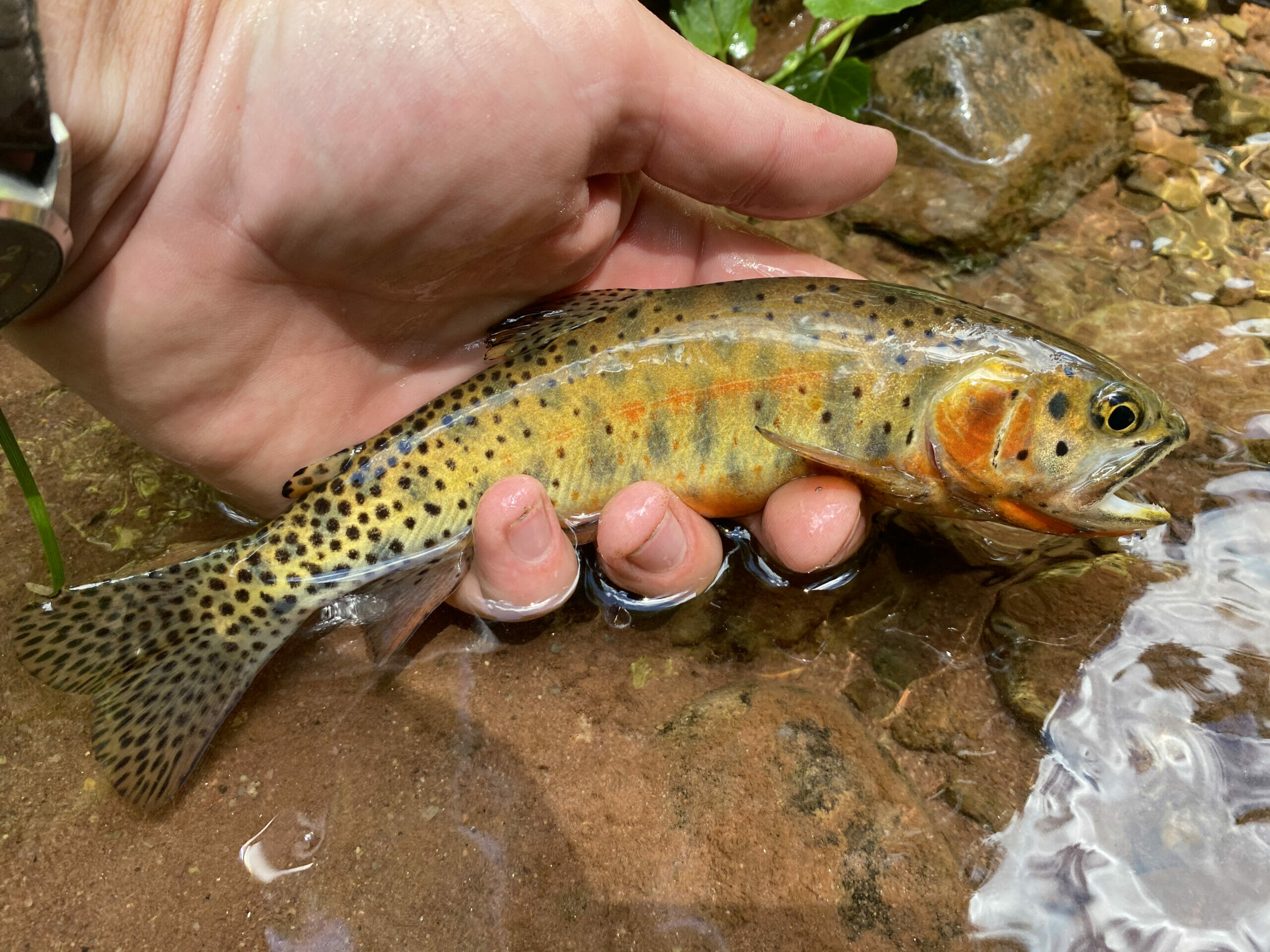Colorado River cutthroat trout (Oncorhynchus clarkii pleuriticus)
Species status and summary: The Colorado River cutthroat trout (CRCT) historically occupied most cool water habitats of the Colorado River watersheds in Colorado, southern Wyoming, eastern Utah, extreme northwestern New Mexico and northeastern Arizona. Currently, however, Colorado River cutthroat trout occupy approximately 16 percent of their historic range, primarily in isolated, small headwater streams. About 8 to 9 percent of the occupied historic range is classified as “conservation populations.”
The Colorado River cutthroat has been called one of the most spectacular of the cutthroat trout and one of the most beautiful fish in North America.
Colorado River cutthroat trout have a bright yellow-gold body with a brassy-green back and orange belly, medium to large spots concentrated on the caudal peduncle and dorsal region (though spotting varies by region) and absent on the pectoral, pelvic, and anal fins, and 180-200 lateral line scales. Similar species include Yellowstone cutthroat trout (O. c. bouvieri) and Bonneville cutthroat trout (O. c. utah), which can be distinguished from Colorado River cutthroat trout by a lower number of lateral line scales (160-175) and less intense body coloration (Behnke 2002; Page and Burr 2011).
Colorado River cutthroat trout are spring spawners, although low water temperatures at altitude can push spawning back as late as July. About a month and a half after the spawn, fry emerge from the gravel stream bed and head for slow moving water at the margins of streams. They are opportunistic feeders, focusing mostly on aquatic and terrestrial insects, although larger specimens will eat smaller fish. One of the reasons that anglers prize cutthroats is that they often eat in the middle of the day, and CRCT are no exception. The relative scarcity of food at high altitudes means that they aren’t all that choosy, as well.
Looking forward: Genetic hybridization, disease, habitat degradation, non-native salmonids, and climate change are the most significant risks to CRCT conservation populations.
The impact of climate change on stream environments is an emerging risk to salmonid populations in the western United States. Native CRCT, which are now relegated to isolated high-elevation headwater stream fragments in the Upper Colorado River Basin, are threatened by predicted changes in climate (i.e., temperature and precipitation) and resulting changes in stochastic physical disturbances (i.e., wildfire, debris flow, and channel drying and freezing) that could further threaten remaining CRCT populations. Populations in short stream fragments and those at the lowest elevations, are at the highest risk of extirpation.
Restoration of CRCT habitat needs to address both habitat quality issues and issues of spatial limitations. Current efforts have been directed at improving in-stream conditions and restoring limited stream fragments as well as implementing protective barriers to isolate key populations.
Maintaining the sportfish status of CRCT and using regulations to control overuse will be an important component of maintaining the health of CRCT populations.. In addition, working with others to maintain appropriate regulations for prevention of disease, water quality impairment, and habitat disturbance are important considerations.
All Data Compiled From:
Western Native Trout Initiative
Utah Division of Wildlife Resources



